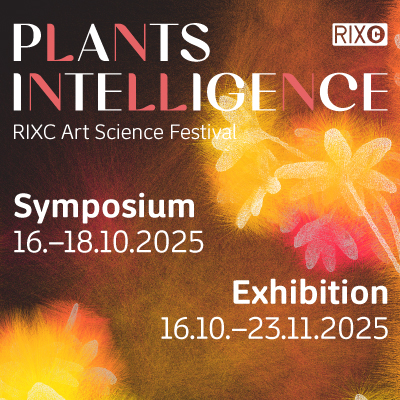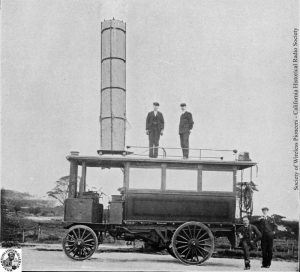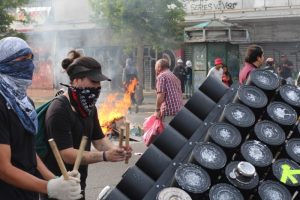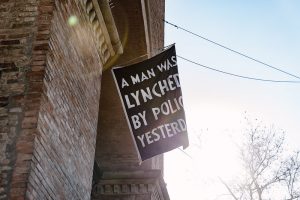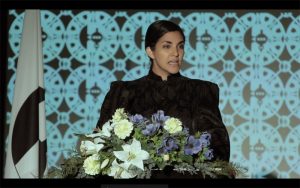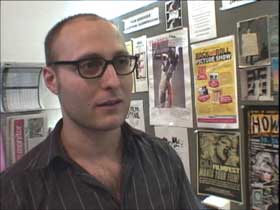 Two years ago, when he was still a student at the Interactive Telecommunications at NYU in New York, Elliott Malkin created a very intriguing Crucifix NG, a cross made out of a circuit board, which broadcasts the Lord’s Prayer. It doesn’t contain any receiver, the signal is inaudible to the human ear. In fact, it’s the body that works as an antenna. After the crucifix, the work of this young new media artist kept on exploring the use of everyday objects invested with the power to sanctify space.
Two years ago, when he was still a student at the Interactive Telecommunications at NYU in New York, Elliott Malkin created a very intriguing Crucifix NG, a cross made out of a circuit board, which broadcasts the Lord’s Prayer. It doesn’t contain any receiver, the signal is inaudible to the human ear. In fact, it’s the body that works as an antenna. After the crucifix, the work of this young new media artist kept on exploring the use of everyday objects invested with the power to sanctify space.
Last year, another of his projects, eRuv: A Street History in Semacode, was installed along the route of the former 3rd Avenue elevated train line throughout Lower Manhattan. This train line was part of a religious boundary called an eruv for a Hasidic community in the first half of the 20th century. An eruv is an ancient architectural construct that stems from the observation of the Sabbath, the sacred day of rest that includes a prohibition against certain kinds of work, including the carrying of objects outside of one’s home, or private domain. The presence of an eruv allows some carrying on the Sabbath by symbolically converting the shared public space within its boundaries into the shared private space of a community. In this way, observant Jews can carry objects such as keys or prayer books while acting in accordance with sacred Talmudic principles.
The train has since been dismantled and most of the community have moved away, so that enclosure is now purely imaginary. Each location along the eruv corresponds to a semacode ID. Camera phone users could receive archival photos of the former eruv at that location, creating a historical reconstruction mapped back onto the original space.
Modern Orthodox, one of Malkin’s most recent works, focuses on the eruv as well. While an eruv is typically constructed with poles and wires, Modern Orthodox employs a combination of low-power lasers, wifi surveillance cameras and graffiti, as a way of designating sacred volumes of space in urban areas.
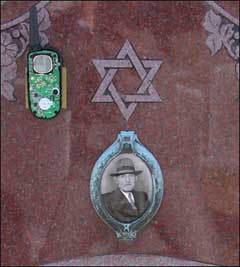 Elliott, who is originally from Chicago and lives in New York City, is also investigating the way religion and technology combine to inform the construction of memorial sites. Earlier this month, he unveiled Cemetery 2.0, a concept for networked devices that connect burial sites to online memorials for the deceased. The prototype links the gravestone of Hyman Victor, his great-grandfather, to his surviving Internet presence. Visitors to the physical memorial can view related memorials on the device display, while visitors of any of the online memorials will recognize that their browsing is associated directly with the actual burial site.
Elliott, who is originally from Chicago and lives in New York City, is also investigating the way religion and technology combine to inform the construction of memorial sites. Earlier this month, he unveiled Cemetery 2.0, a concept for networked devices that connect burial sites to online memorials for the deceased. The prototype links the gravestone of Hyman Victor, his great-grandfather, to his surviving Internet presence. Visitors to the physical memorial can view related memorials on the device display, while visitors of any of the online memorials will recognize that their browsing is associated directly with the actual burial site.
If you’re curious about the way modern technologies are finding their way into the everyday practice and observance of religion and spirituality, you might agree with me that Elliott’s approach is by far one of the most innovative and though-provoking ones.
You’ve written that you’re not a religious person. What makes you want to work on what you call faith-based electronics?
Religion is often delivered in packets of dogma. But religions are creative constructs – inventions of man – and I am interested in the way people use these constructs as frameworks for rational decision-making. Faith-based electronic devices are designed to illustrate how this happens in everyday situations. Usually, it requires an investment of faith in order for the devices to function.
I haven’t seen many new media artists treating religion as a subject. Do you know of any other artists involved in this field? Do you feel that you’re a pioneer?
Televangelists have been in the business for years. I think they’re new media artists, probably the most successful new media artists.
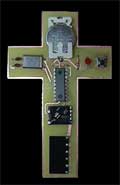 Do you regard the Crucifix NG (Next Generation) as a one-off art piece? Or do you imagine that people might want to buy it for their home?
Do you regard the Crucifix NG (Next Generation) as a one-off art piece? Or do you imagine that people might want to buy it for their home?
I imagine that people would install Crucifix NG in their home or office, just as they do with all kinds of religious iconography. But I leave that to the imagination. I don’t intend to mass-produce Crucifix NG at this time, though there may be a market for this sort of device. One of the major applications for Crucifix NG is in the area of data security, to bathe storage devices in a protective electromagnetism.
What was your intention with Modern Orthodox? How successful was it?
Modern Orthodox is my second project that deals with the eruv, a wire that is used to circumscribe Jewish neighborhoods for the observation of the Sabbath. In Modern Orthodox, I built an eruv out of laser beams and wifi surveillance cameras, instead of wires, so that the integrity of the eruv can be monitored from a remote location. One of the reasons I am interested in the eruv is that it is essentially an ancient virtual space, one that exists in the minds of those who respect it. Non-observers who live within the eruv either cannot, or choose not, to see it. I also produced a series of images, the Modern Orthodox Transmissions, as a byproduct of the surveillance portion of the system.
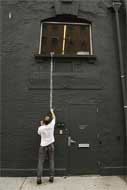
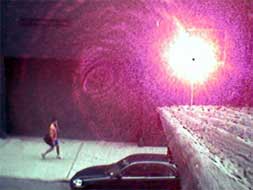 Chalking the four symbolic eruv poles, which support the laser lintels and Laser bloom produced by shooting a red beam into a wifi surveillance camera across the street
Chalking the four symbolic eruv poles, which support the laser lintels and Laser bloom produced by shooting a red beam into a wifi surveillance camera across the street
What are you doing when you’re not exploring “the use of everyday objects invested with the power to sanctify space?”
I am interested in the way everyday objects are used as memorials for the deceased (Cemetery 2.0), which I suppose is related to the above. But Cemetery 2.0 is really a front for my genealogical research (Everything I Know About Hyman Victor) and deals more with memory and the preservation of experience. Family Movie is another of my projects in this area.
 In Family Movie you put online some intimate moments of your childhood and mirrored them with contemporary images. What were you trying to achieve with this video?
In Family Movie you put online some intimate moments of your childhood and mirrored them with contemporary images. What were you trying to achieve with this video?
My parents have been living in the same house outside of Chicago all my life, and a few years ago I salvaged our old super8 home movies from the basement. When I saw the images of myself running around as a blissful toddler, I felt a sort of depersonalization. So I went back to my parents’ house and had them reenact various scenes in the movies, shot by shot and gesture by gesture. In one scene that my father shot 30 years earlier on a vacation at the Marco Polo hotel in Florida, I stood in his exact position by the pool and reconstructed his camera movements. In other scenes, the ones of me as a toddler, I do not appear at all, as I am now behind the camera.
Any artist(s) whose work is not getting the attention it deserves from the public?
My favorite blog is ezola. I also like Walid Raad for obscuring the boundary between documentary and fiction. Northern Electronics Research Division comes to mind. And I think Louise Ma makes some cool stuff.

